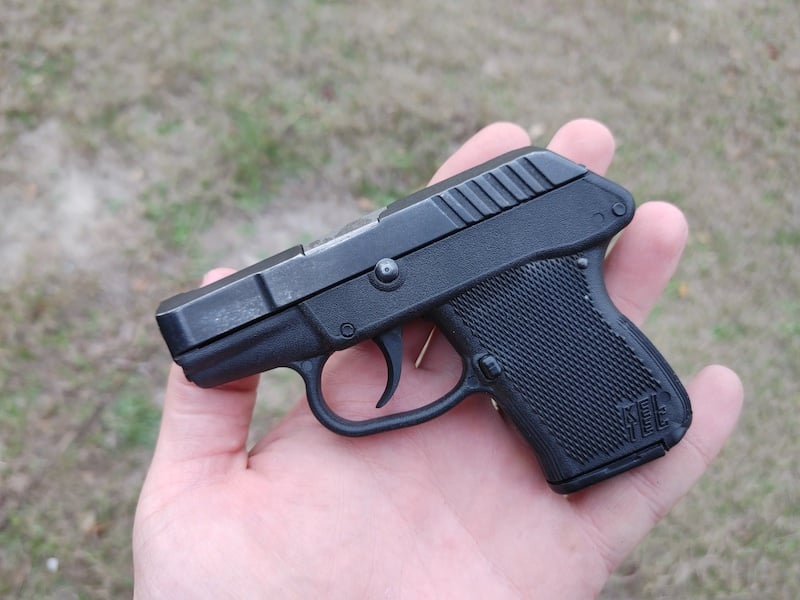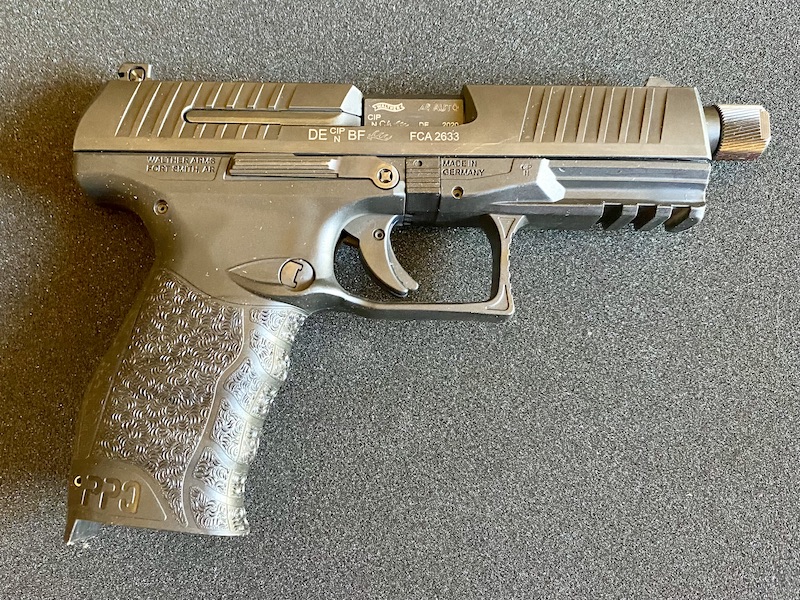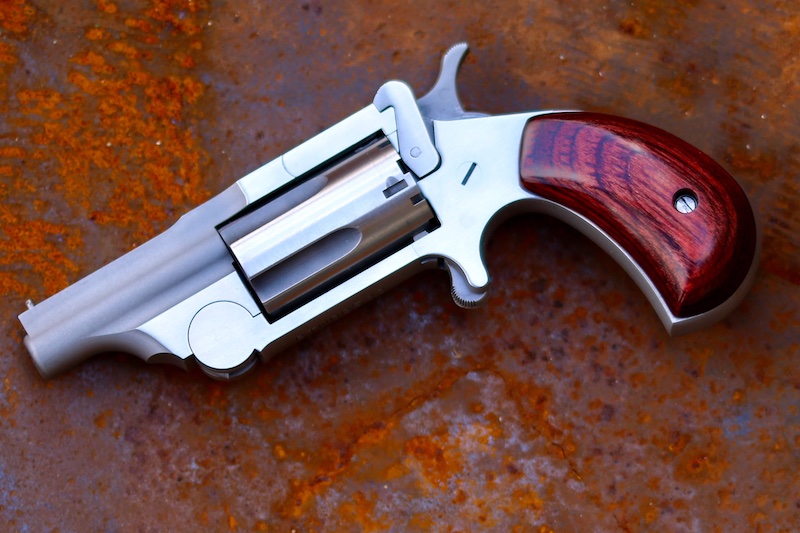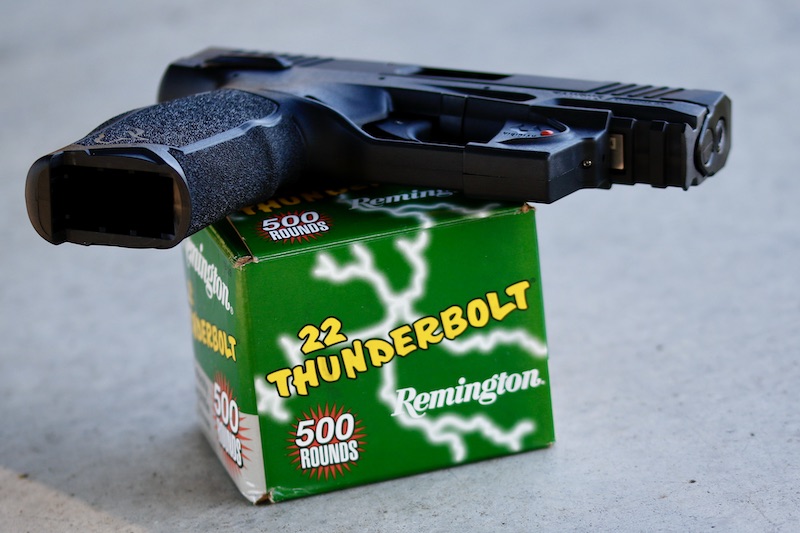If you ask 100 people what caliber they prefer for EDC, I bet more than 80% will say 9mm. The cartridge provides exceptional terminal ballistics, isn’t crazy expensive, and the guns have gotten smaller and better. But what about the other 20%?
Any conversation on caliber has to acknowledge that many in this country still live in states that—at the very least—have rosters of available handguns. While California is adding to its list, the 9mm remains underrepresented in the roster, so some decisions are made based on legality. Others, though, are looking for something the 9mm can’t provide.
The Calibers That Won’t Make This List
There are some rounds that had (“had” being the operative word) serious potential that have since faded away. .40 S&W is a solid example. While slightly faster than 9mm, the .40 S&W shows signs of declining popularity. .357 Sig, likewise, was a round that promised to take the anemic performance of standard 9mm ball ammo to the next level. While exceptionally effective, it never caught on.
10mm may be the one cartridge that could still be compelling for EDC. Taurus has just launched a new 10mm pistol that looks to be small enough for EDC, though it might be punishing on the shooter. Having not seen one in the wild yet, I’m reserving judgment.
Almost all of the other 10mm guns out there are larger than most would consider for IWB carry. The 10mm fills that same space for me that was once occupied by .44 Magnum—both are ideal for bear country, but they’re not as easy to handle when multiple shots might be needed because of their recoil.
.30 Super Carry? Crickets.

What Makes the .380 an Ideal Caliber for Concealed Carry?
While I love the PPK, there are many smaller, thinner, lighter .380s that are perfect for concealment. Kel-Tec’s P3AT is my go-to. And this is a popular choice for many LEOs who carry a back-up for their back-up. The P3AT is stupid-slim. The single-stack mags are not known for their mind-blowing capacity, yet extensions are available that make the round count more practical. In order to provide more reliable terminal ballistic performance, pick out solid ammo. I’d highly recommend Hornady’s Critical Defense.

Is the .45 ACP in Decline?
The .45 ACP is still a dynamic choice for those looking for a larger round. We can debate ballistics all day long, but here are two basic facts. Like many of the .380 rounds, .45 ACP can be slow. Some are subsonic. Yet the .45 ACP is a heavy round. Does a .45 ACP round fly fast enough to expand? It depends on what it is fired from—as in the length of the barrel—and what it passes through on the way to the target. .45 ACP hollow-points are, like all hollow-points, prone to clogging with heavy fabrics that prevent them from opening up.
I prefer a heavier .45 ACP for EDC, one that I can carry outside the waistband in a high-ride holster in winter. The Walther PPQ has been proven ideal, both in 9mm and .45 ACP. Its ergonomics are impeccable. The PPQ’s controls are easy to manipulate, and the curves in the grip—unlike many guns out there—seem perfectly molded to the human hand.
Walther doesn’t get enough credit for its handguns. The PDP and PPQ are guns that are changing that. And it isn’t enough to just hold one in the gun store—you need to feel these triggers on the range, feel the short reset. I’m faster and more accurate with a PPQ than I am with just about any other compact.
Is the .45 ACP too big for in-waist-band carry? Hardly. You won’t get the same capacity you would with a similarly sized 9mm (the PPQ 45 holds 12), but some don’t care so much about capacity. Look for hollow points from Hornady. The Critical Duty rounds are impressive.

Speaking of Capacity Issues: .38 Special
When we get into the wheel guns, caliber is a big topic of debate. There are numerous new variants that find their way into production chamberings, but the classic still sets the bar. .38 Special, .38 +P, and (in some guns) .357.
I’m not a wheel-gun snob. In the past two decades, I’ve carried snub-nosed .38s from Ruger, Taurus, Kimber, Smith & Wesson, and Colt. All of these, I could argue, are like the 1911 now. Everybody seems to make one; they all have some small distinction that might set them apart, but the terminal ballistics are the same.
My current choice is a Smith & Wesson. The S&W guns disappeared from shelves pretty quickly during the pandemic, but they’re coming back. The prices, too, are reasonable. Smith revolvers tend to hold their value well for those who like buying, trying, and selling guns. Capacity, though. These are 5-shot revolvers. They’re not fast to load. I’d give this advice: no matter what gun you choose to carry, you have to train. Proficiency is everything.
The classic revolver is another of the guns that I consider fair game for IWB carry and for OWB, and there are some solid options out there for alternative carry (mainly front pocket holsters).
Ammunition options include low-recoil rounds, standard .38 Special rounds, and faster .38 +P rounds. Some J-frame S&W snub nose guns, like the Model 60, will also take .357 rounds.
Check your ballistics, though. Short guns strip power from rounds because there’s not enough barrel length for the powder to burn fully. The speeds on ammo boxes are all clocked with longer barrels.

The .22 Winchester Magnum?
Here’s where the debate starts in earnest. I’ve carried a few guns from North American Arms during review periods. And I’ve often had one in a pocket as a second gun, but I’ve never made this a dedicated EDC gun. That said, I know so many people who do that, and I feel compelled to give it a fair shake here.
As a gun geek, I’m fascinated by well-made machines. And this humble-looking revolver from NAA is brilliantly well made.
I’ve spent way more time with this gun on my desk than I have with it at the range. While I’m drawn to its clockwork precision, I don’t enjoy shooting it as much. This is an important distinction for me, as I train with my EDC guns almost constantly.
Yet the NAA Ranger is about the easiest thing to conceal since the Baby Browning (chambered in a laughable .25 ACP) rode off into the sunset. You can put the Ranger in a slim pocket holster right in your front pocket, and no one (except the TSA agent) will know it’s there.
With such a slim design that is truly effortless to carry, the Ranger becomes a gun you have no excuse to leave behind. For some, that’s all it takes to win this argument. You may have to adjust your wardrobe to carry a .45 ACP Walther PPQ, but not this micro-revolver.
How does the .22 WMR perform? Let’s curtail any discussion by agreeing that shot placement is everything.
There are many good .22 magnum options out there now. I prefer these, personally. The CCI rounds perform very reliably. You can also shoot .22 LR (or even .22 Shorts) through the NAA, which makes training a bit less expensive.

.22 LR—Seriously?
Most definitely. 22 LR is likely the last round many of us would consider for EDC. But check your bias.
Before she died, my aging mother developed an interest in concealed carry. She’d grown up in rural Alabama and was a great shot but had never really thought about carrying a gun.
We hit the range one afternoon with a couple of cases full of handguns. She was in her 60s, then, and wasn’t able to handle the slides on most guns. Recoil, for people with arthritis, is not good. Even when she could get rounds into the chamber, she had difficulty controlling the gun for a follow-up shot. We landed on .38 Special. It worked well enough for a couple of years, and then she gave it up. Even it was too much.
If she were still around now, I’d introduce her to the Taurus TX 22. With 16 rounds in the mag, this is a compelling pistol for recoil-sensitive people. And practice doesn’t get any cheaper.
Why is .22 a Viable Caliber for EDC? Why are Any of These Rounds?
The answer isn’t complicated. It involves capacity and control. Carrying a concealed handgun for self-defense presupposes that you may use this gun to defend yourself or others. The best way to do this is to eliminate the threat. That requires training, awareness, and practice. What you carry, though, may be dictated more by practical convenience.


